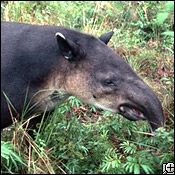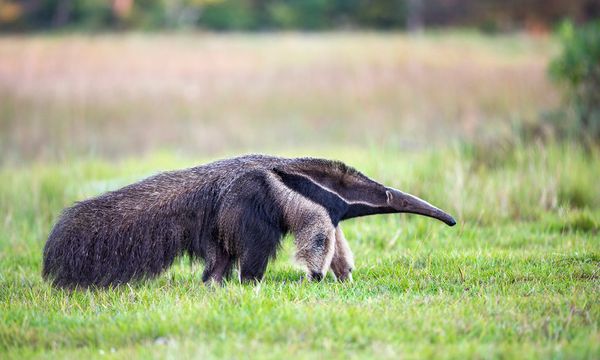As with other tapirs, the short trunk of the Baird's tapir is composed of nose and upper lip. The tapir uses its trunk to pick up grasses, leaves, and fruit and carry them to the mouth.
This elusive creature is an important seed disseminator because it prefers to spit out fruit seeds rather than eat them along with the flesh.
Advertisement
Although it spends most of its time in the water or lying in the mud, the tapir can move quickly and is an excellent swimmer.
The Baird's tapir is easy to track because it often follows previously used paths and it leaves distinctive three-toed tracks (each toe has a broad hoof).
The species was heavily hunted for sport, its meat, and its hide; today it is also threatened by deforestation for agriculture and logging.
Advertisement

